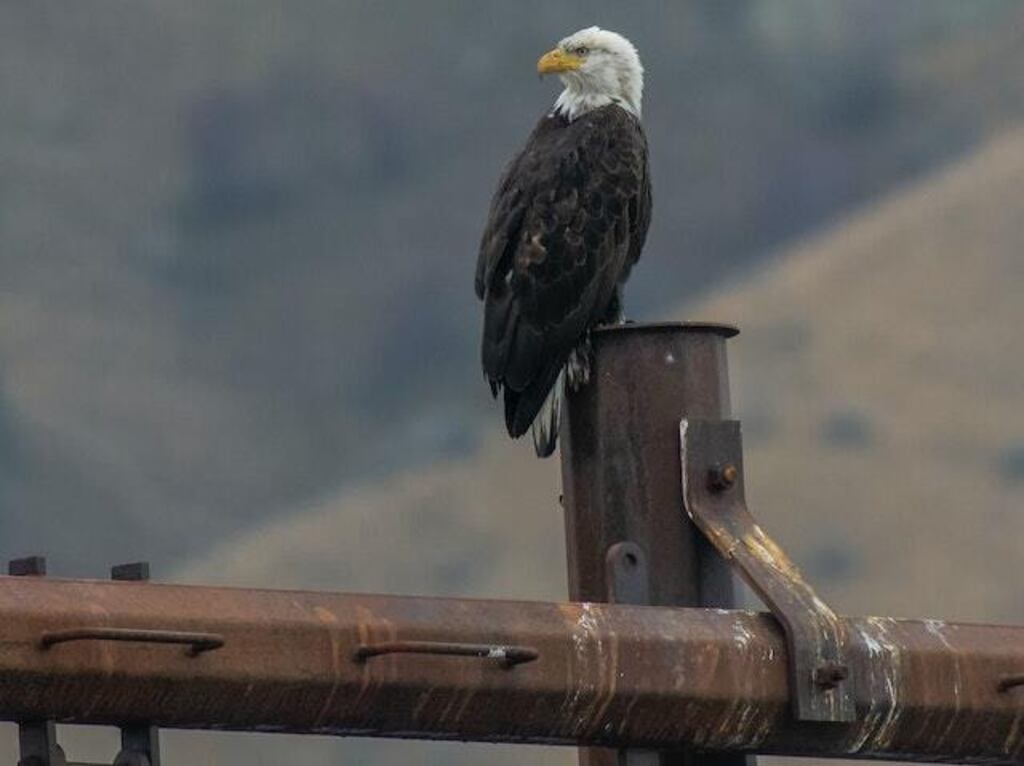Are Eagles Endangered? Fear not, fellow bird enthusiasts! Eagles, those magnificent birds of prey, have captivated the human imagination for centuries. Symbols of strength, freedom, and power, they’ve been revered and feared worldwide.
But hold onto your binoculars, for there’s a pressing concern. Eagles, despite their cultural significance, face threats endangering their populations.
From the majestic Bald Eagles to the mighty Harpy Eagles, these avian wonders encompass over 70 diverse species across continents (except Antarctica).
While some enjoy stable populations, others teeter on the edge of extinction.
Habitat loss, hunting, pollution, and climate change contribute to their decline. In this article, we’ll delve into the status of iconic eagle species, unveiling the challenges they confront in their habitats.
Brace yourselves for tales of resilience and discover the efforts being made to safeguard these awe-inspiring creatures.
Get ready to spread your wings and embark on an illuminating journey through the realm of eagles.
Table of Contents
- 1 Key Takeaways
- 2 Are Eagles Endangered
- 3 Overview of the Eagle Population
- 4 Bald Eagles: From Near-Extinction to Recovery
- 5 Philippine Eagles: Threatened by Habitat Loss and Hunting
- 6 Harpy Eagles: Endangered by Habitat Loss and Hunting
- 7 Golden Eagles: Status and Conservation Efforts
- 8 Other Eagle Species: Population Status and Conservation Efforts
- 9 Threats to Eagle Populations
- 10 Importance of Eagles in their Ecosystems
- 11 International Efforts to Protect Eagles
- 12 The Role of Conservation Organizations
- 13 Frequently Asked Questions
- 13.1 How does the decline in eagle populations affect other species in their ecosystem?
- 13.2 What specific actions are being taken by conservation organizations to protect eagles?
- 13.3 How have human activities, such as urbanization and industrialization, impacted eagle habitats?
- 13.4 Are there any cultural or historical beliefs or traditions that contribute to the endangerment of certain eagle species?
- 13.5 How do eagle conservation efforts vary between different countries and regions?
- 14 Conclusion
- 15 Author
Key Takeaways
- Many eagle species are facing significant challenges that have put them on the brink of extinction.
- Factors contributing to the decline of eagle populations include habitat loss, hunting, pollution, and climate change.
- The bald eagle population in the United States has made a remarkable recovery due to conservation efforts.
- The Philippine eagle population has declined due to deforestation and hunting.
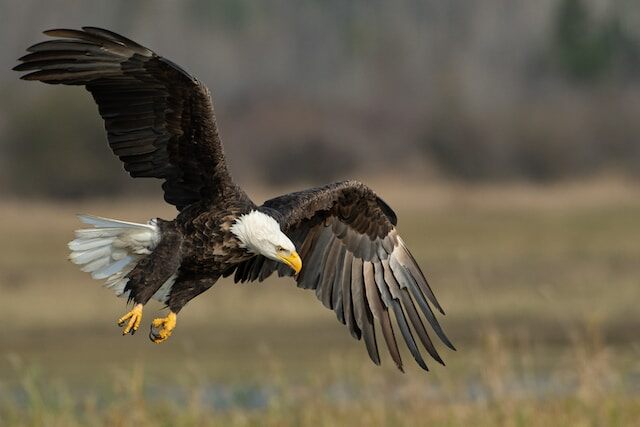
Are Eagles Endangered
Some eagle species face endangerment due to various threats. Factors like habitat loss, hunting, pollution, and climate change contribute to their decline.
Efforts are underway to protect these magnificent birds, but conservation measures are crucial to ensure their survival and preserve their cultural significance.
Overview of the Eagle Population
The current population of eagles, while varying by species and region, can generally be characterized as stable or increasing due to conservation efforts and legal protections.
Eagle population trends have been influenced by numerous conservation challenges, such as habitat loss, hunting, and pollution.
However, efforts to protect and conserve these magnificent creatures have been successful in many instances.
For example, the bald eagle population in the United States was once near extinction, but through conservation efforts, the species has made a remarkable recovery.
Bald eagles have become a symbol of American freedom and resilience, highlighting the importance of conservation efforts in protecting our natural resources.
Bald Eagles: From Near-Extinction to Recovery

Despite facing significant threats to their survival in the past, the population of bald eagles has made a remarkable recovery in recent years.
The bald eagle was once on the brink of extinction due to habitat loss, hunting, and the use of toxic pesticides.
However, conservation efforts, including the banning of harmful pesticides and the protection of nesting sites, have led to a significant increase in the bald eagle population.
According to the U.S. Fish and Wildlife Service, the bald eagle population has increased from less than 500 breeding pairs in the 1960s to over 10,000 breeding pairs today.
This conservation success story demonstrates the power of dedicated efforts to protect and restore endangered species.
However, other eagle species, such as the Philippine eagle, continue to face threats from habitat loss and hunting.
Philippine Eagles: Threatened by Habitat Loss and Hunting

Habitat loss and hunting pose significant threats to the survival of the Philippine eagle, highlighting the need for conservation efforts to protect this endangered species.
The Philippine eagle, also known as the monkey-eating eagle, is endemic to the Philippines and is one of the largest and most powerful eagles in the world.
However, the population of Philippine eagles has declined due to deforestation and hunting.
Habitat conservation is crucial for the survival of the species, as they require large territories of forested areas for hunting and nesting.
Hunting regulations need to be strictly enforced to prevent the killing of these birds for their feathers, meat, or as trophies.
Furthermore, captive breeding and release programs have been established to help increase the population of Philippine eagles in the wild.
Efforts to protect this magnificent bird are ongoing, and it is important to continue raising awareness about the importance of conserving their habitat and regulating hunting practices to ensure their survival.
The next subtopic will explore the challenges faced by harpy eagles, another endangered species threatened by habitat loss and hunting.
Harpy Eagles: Endangered by Habitat Loss and Hunting

The Harpy Eagle is an iconic bird of prey that inhabits the rainforests of Central and South America. However, its population has been declining due to habitat loss and hunting.
The loss of its habitat is primarily caused by deforestation and human encroachment, while hunting is driven by the demand for its feathers and body parts.
Conservation efforts include habitat protection, education, and captive breeding programs to help increase the population of this endangered species.
Overview of Harpy Eagle Population
An examination of the current population of Harpy Eagles indicates a concerning trend towards decline.
Recent studies on Harpy eagle habitat and population genetics have revealed that there are only around 50,000 mature individuals left in the wild, with a population decline rate of 1-2% annually.
Furthermore, the Harpy eagle population is fragmented and declining in many parts of its range due to deforestation, hunting, and human disturbance.
The lack of suitable habitat and prey availability is also a key factor contributing to their population decline.
This alarming trend highlights the urgent need for conservation efforts to protect the Harpy eagle population and its habitat.
The next section will explore the causes of Harpy eagle population decline and what can be done to address this issue.
Causes of Harpy Eagle Population Decline
Deforestation and hunting have been identified as the foremost factors contributing to the decline of the Harpy eagle population.
Habitat destruction due to human activities, such as logging and agriculture, has led to a loss of nesting sites and prey availability.
Additionally, hunting pressures on the Harpy eagle have increased due to their large size and powerful talons, which make them desirable as trophies or for traditional medicine.
These factors have resulted in a significant reduction in the Harpy eagle population, leading to their classification as Near Threatened on the IUCN Red List.
To address this issue, conservation efforts to protect Harpy eagles have been implemented, which will be discussed in the subsequent section.
Conservation Efforts to Protect Harpy Eagles
Conservationists have implemented various measures to safeguard the natural habitat of Harpy eagles and promote sustainable hunting practices.
Harpy eagle breeding programs have been established in both captivity and in the wild, with the aim of increasing the population size.
These programs have seen some success, with several eaglets being successfully raised and released into the wild.
In addition, community involvement has been crucial in protecting the Harpy eagle, with education programs being implemented to raise awareness about the importance of conservation and sustainable hunting practices.
Conservationists have also worked with local communities to establish protected areas for the Harpy eagle, ensuring that their natural habitat is preserved.
The following table illustrates some of the conservation efforts that have been implemented to protect the Harpy eagle:
| Conservation Effort | Description |
|---|---|
| Harpy eagle breeding programs | Programs established to increase population size |
| Education programs | Raising awareness about conservation and sustainable hunting practices |
| Establishment of protected areas | Working with local communities to establish protected areas for the Harpy eagle |
| Sustainable hunting practices | Promoting the use of non-toxic ammunition and reducing hunting quotas |
These efforts have been successful in preventing the Harpy eagle from becoming extinct, but more work needs to be done to ensure their long-term survival.
As we transition into the subsequent section about ‘golden eagles: status and conservation efforts’, it is important to note that conservation efforts must be tailored to the unique needs and challenges faced by each species.
Golden Eagles: Status and Conservation Efforts
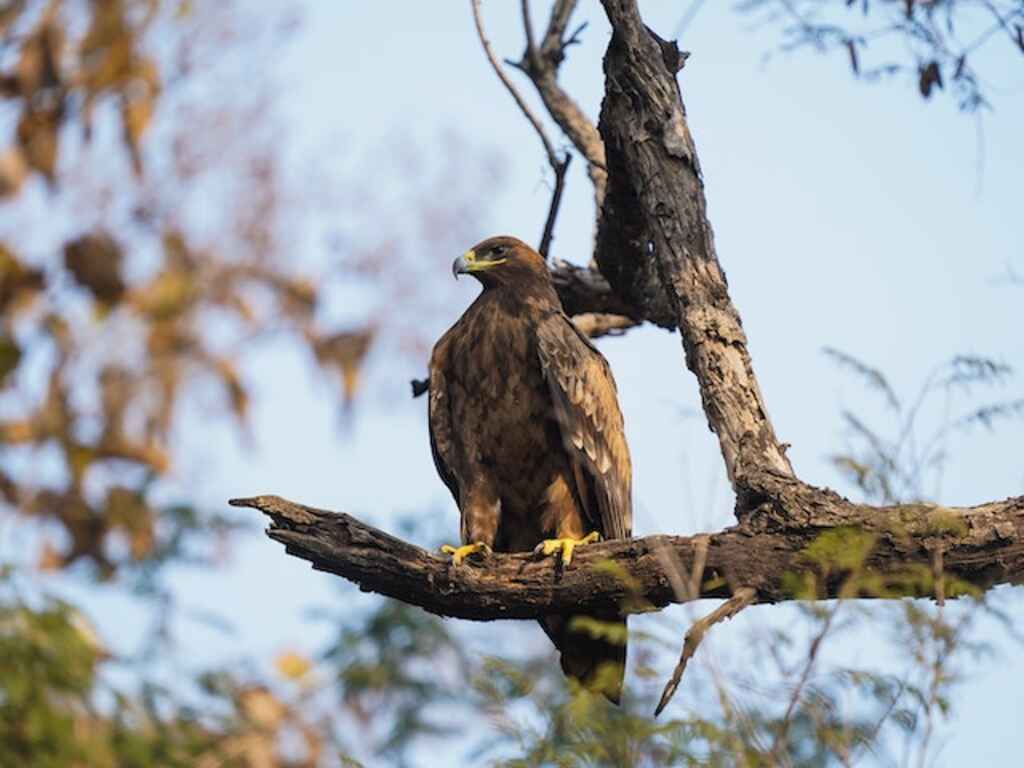
The majestic Golden Eagle is one of the most iconic raptors of North America, with its distinctive brown plumage and impressive wingspan.
These birds of prey are found across the western United States, including Alaska and Canada.
Golden Eagles prefer open and semi-open habitats, such as grasslands, deserts, and mountains, and they also nest in cliffs and rocky outcrops.
Unfortunately, Golden Eagles have faced many challenges, including habitat loss, pesticide poisoning, and illegal hunting practices.
In recent years, conservation efforts have focused on protecting nesting and foraging habitats, reducing the use of pesticides, and enforcing laws to prevent illegal hunting.
While populations of Golden Eagles are generally stable, there are still concerns about the impact of climate change and habitat fragmentation.
Understanding the threats to Golden Eagles and implementing effective conservation measures is crucial for ensuring the long-term survival of this iconic species.
As we move on to the next section about other eagle species, it is important to note that each species faces its own unique challenges, and conservation efforts must be tailored to address these specific needs.
Other Eagle Species: Population Status and Conservation Efforts
Several avian species in the family Accipitridae, including eagles, are facing population declines and require targeted conservation efforts to address these issues.
Conservation strategies are crucial for the preservation of species diversity, as eagles play important roles in their ecosystems as top predators.
Efforts to conserve different eagle species vary depending on their population status and distribution.
Some examples of conservation efforts include captive breeding, habitat restoration, and reducing threats such as hunting and habitat destruction.
It is essential to prioritize and implement these conservation strategies to prevent further declines in eagle populations.
In the subsequent section, we will explore the threats that are impacting eagle populations and the measures needed to mitigate them.
Threats to Eagle Populations
While conservation efforts have been successful in increasing the populations of some eagle species, many still face threats to their survival.
Habitat destruction, due to human activities such as deforestation and development, is a major concern for eagle populations.
Illegal hunting, whether for sport or for the black market, also poses a significant threat.
These activities can disrupt breeding patterns, reduce food sources, and ultimately lead to a decline in eagle populations.
It is crucial that efforts to mitigate these threats continue in order to ensure the survival of these magnificent birds.
With their important roles in their ecosystems, eagles play a crucial part in maintaining a balanced ecosystem.
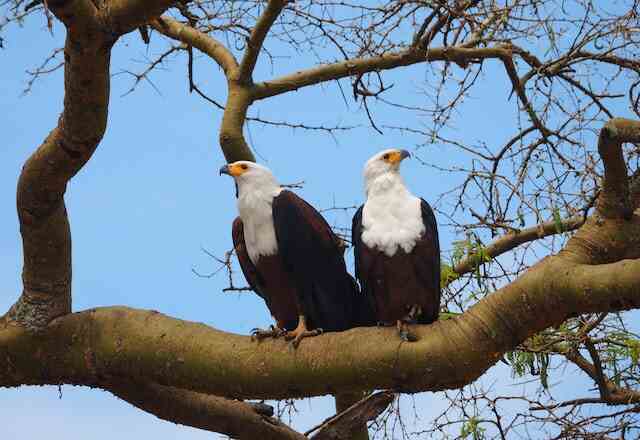
Importance of Eagles in their Ecosystems
Significant ecological benefits are brought about by the presence of eagles in their respective ecosystems. These majestic birds of prey play a crucial role in maintaining the balance of their habitats.
Eagles are apex predators and help regulate the population of their prey species, such as fish, rodents, and reptiles.
By doing so, they prevent the overgrazing of vegetation and control disease outbreaks in their ecosystems.
Moreover, eagles are scavengers that feed on carrion, thereby cleaning up the environment and reducing the spread of disease.
Thus, eagle conservation is essential for maintaining the ecological significance of these birds and the health of their habitats.
Without them, we risk destabilizing entire ecosystems and ultimately, the global balance of nature.
As we move forward, it is vital to protect these magnificent creatures and ensure their survival for generations to come. This is where international efforts to protect eagles come into play.
International Efforts to Protect Eagles
The conservation of eagle populations is a global concern, and international agreements and laws have been developed to protect these majestic birds.
These agreements aim to establish guidelines for the protection of eagle habitats, regulate hunting and trade of eagles and their body parts, and promote conservation efforts.
Collaborative efforts between countries and organizations have also been established to promote the recovery and sustainability of eagle populations.
Overview of International Agreements and Laws
International agreements and laws have been established to regulate and protect eagle populations. These agreements and laws provide legal protection to eagles by prohibiting their hunting, trading, and possession.
The Convention on International Trade in Endangered Species of Wild Fauna and Flora (CITES) is a global agreement that regulates the international trade of endangered species, including eagles.
The Migratory Bird Treaty Act (MBTA) is a US federal law that prohibits the hunting, killing, or possessing of migratory birds, including eagles, without a permit.
The Bald and Golden Eagle Protection Act (BGEPA) is another US federal law that provides protection to bald and golden eagles by prohibiting their killing, selling, or trading.
These international agreements and laws play a crucial role in the conservation of eagle populations by providing legal frameworks for their protection.
Collaborative efforts to protect eagle populations involve a range of activities, including monitoring and research, habitat protection, and education and awareness programs.
Collaborative Efforts to Protect Eagle Populations
Collaborative efforts aimed at the preservation of eagle populations involve a myriad of approaches that encompass research, habitat protection, and education programs, ultimately ensuring the survival of these magnificent birds.
Collaborative initiatives include conservation partnerships between government agencies, non-profit organizations, and private landowners.
These partnerships work together to monitor and protect eagle populations, as well as their habitats.
Research efforts include tracking eagle movements and migration patterns, as well as studying their behavior and biology.
Habitat protection involves preserving and restoring nesting sites, as well as protecting and restoring wetlands, forests, and other important habitats.
Education programs aim to increase public awareness and understanding of the importance of eagles and their role in the ecosystem.
By working together, these collaborative efforts are helping to ensure the future survival of eagles.
The subsequent section will explore the role of conservation organizations in these efforts.
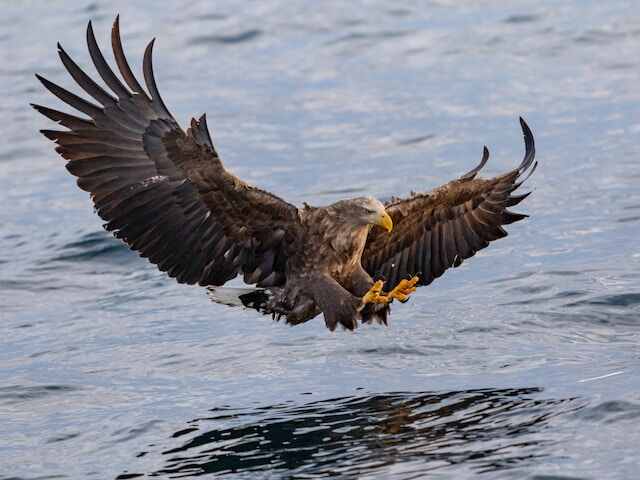
The Role of Conservation Organizations
Conservation organizations play a vital role in protecting endangered species, including eagles.
These organizations work towards the conservation of natural habitats, reduction of human activities that threaten the survival of eagles, and research for the development of effective conservation strategies.
Efforts such as habitat restoration, public education, and advocacy play a significant role in protecting eagle populations and ensuring their survival for future generations.
Overview of Conservation Organizations
Various organizations exist that focus on protecting eagle populations, utilizing scientific research and data analysis to inform their conservation efforts.
These conservation organizations employ a range of conservation strategies, such as habitat restoration, captive breeding programs, and public education campaigns to raise awareness about the importance of eagle conservation.
Funding sources for these organizations come from a variety of places, including government grants, private donations, and corporate sponsorships.
Some of the most well-known conservation organizations include the American Eagle Foundation, the National Audubon Society, and the World Wildlife Fund.
Through their tireless efforts, these organizations have made significant strides in protecting eagle populations from threats such as habitat loss, pollution, and illegal hunting.
As we delve deeper into efforts to protect eagle populations, it becomes clear that the work of these organizations is crucial to the survival of these magnificent birds.
Efforts to Protect Eagle Populations
Conservation organizations play a significant role in protecting the endangered eagle population. However, their efforts are not enough without community involvement and government policies.
The community plays a crucial role in protecting eagle habitats, preventing habitat destruction, and reporting any illegal activities.
On the other hand, government policies such as the Endangered Species Act (ESA) and the Bald and Golden Eagle Protection Act (BGEPA) provide legal protection for eagles and their habitats.
The table below summarizes the conservation status, population, and threats faced by four species of eagles in North America.
By working together, conservation organizations, the government, and the community can ensure the survival and thriving of eagle populations for generations to come.
| Species | Conservation Status | Population | Threats |
|---|---|---|---|
| Bald Eagle | Least Concern (LC) | ~300,000 | Habitat loss, hunting, pollution |
| Golden Eagle | Least Concern (LC) | ~170,000 | Habitat loss, hunting, electrocution |
| Harpy Eagle | Near Threatened (NT) | ~50,000 | Habitat loss, hunting, trapping |
| Philippine Eagle | Critically Endangered (CR) | ~400 | Habitat loss, hunting, trapping |
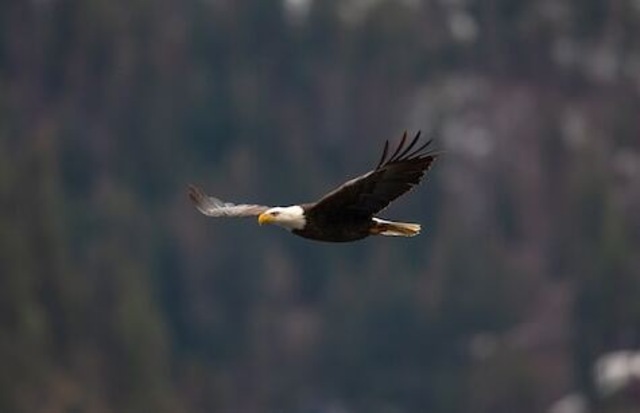
Frequently Asked Questions
How does the decline in eagle populations affect other species in their ecosystem?
The decline in eagle populations can negatively impact interconnected ecosystems as eagles are keystone species. This can disrupt food webs and lead to cascading effects on other species. Such impacts can ultimately affect the overall health of ecosystems.
What specific actions are being taken by conservation organizations to protect eagles?
What conservation strategies are being implemented to protect eagles? Funding sources for conservation organizations include government grants and private donations. Strategies include habitat protection, captive breeding, and public education. These efforts aim to ensure the survival of eagles and their ecosystem.
How have human activities, such as urbanization and industrialization, impacted eagle habitats?
Urbanization and industrialization have significantly impacted eagle habitats. These activities lead to habitat loss, fragmentation, and pollution, reducing the eagles’ food sources and nesting sites. As a result, eagles’ populations have declined in some regions.
Are there any cultural or historical beliefs or traditions that contribute to the endangerment of certain eagle species?
Cultural beliefs and hunting practices are contributing factors to the endangerment of some eagle species. Some cultures believe in using eagle parts for traditional medicine or jewelry, while others hunt eagles as a sport. These practices have led to a decline in eagle populations.
How do eagle conservation efforts vary between different countries and regions?
International cooperation and local initiatives play a vital role in eagle conservation efforts. Various countries and regions have implemented different approaches, such as habitat protection, captive breeding, and public education. These efforts aim to ensure the survival of eagle populations worldwide.
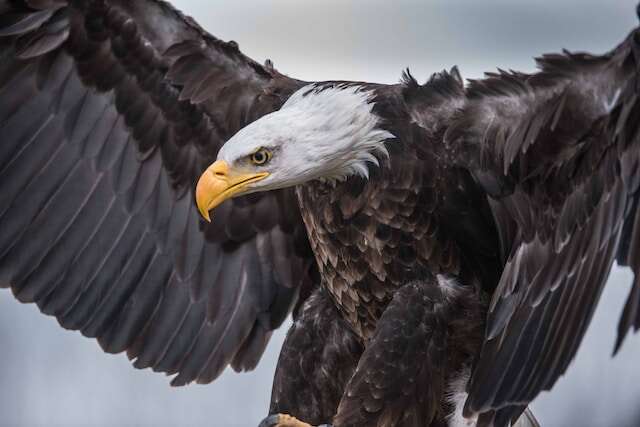
Conclusion
In conclusion, the fate of the eagle population is a significant concern for conservationists and wildlife enthusiasts alike.
Despite the remarkable recovery of Bald Eagles, Philippine Eagles, Harpy Eagles, and Golden Eagles continue to face severe threats due to habitat loss and hunting.
The importance of eagles in their respective ecosystems cannot be overstated, as they play critical roles in maintaining ecological balance.
Therefore, international efforts to protect eagles are crucial to ensure their survival and the well-being of their habitats.
Conservation organizations have a vital role in raising awareness and implementing measures to safeguard these majestic birds.
As eagles soar high in the sky, their populations remain vulnerable to human activities.
The dwindling numbers of some eagle species are symbolic of the detrimental impact of human actions on the environment.
However, the resilience and majesty of these birds inspire hope that, with concerted efforts, we can reverse the damage and preserve their habitats.
As we strive to protect the eagle populations, we must remember that we are not merely safeguarding these birds, but also the intricate webs of life that they are a part of.
The plight of eagles is a call to action for all of us to take responsibility for the well-being of our planet and its inhabitants.

